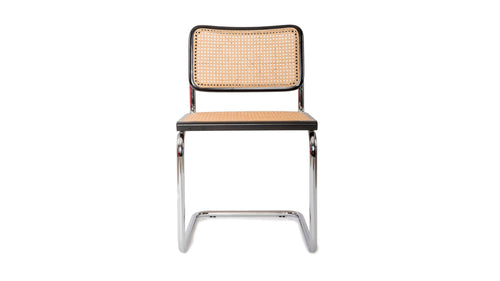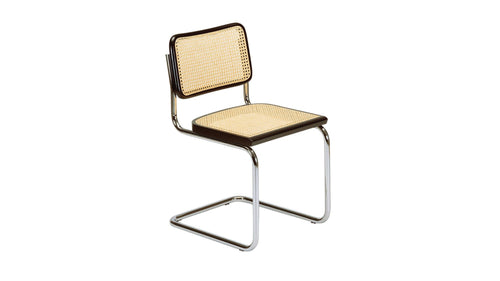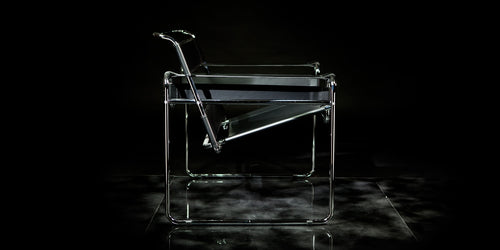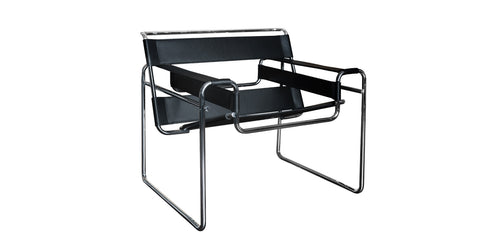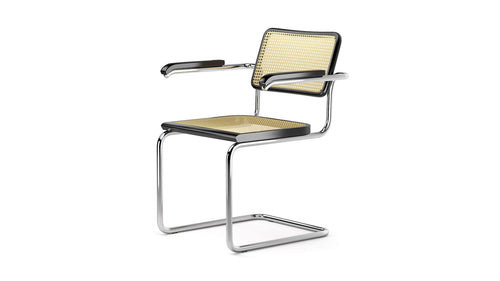Marcel Breuer
M. Breuer
(1902-1981)
The quest for a clear, firm reply that satisfies all requirements and purposes is what leads architecture to the kingdom of the abstract and what breathes life into art. Hungarian born Marcel Breuer completed his studies at a very young age and then he became teacher at the Bauhaus, the renowned school of architecture and applied arts created by Walter Gropius in Weimar in 1919. It is there that he discovered tubular steel, his distinctive mark as a designer; Breuer used it for the structures of stools, tables and chairs which would become emblems for an entire age. Among those designs there was the “Wassily”, essential and rigorous, considered the first chair ever created in steel tube, an absolute masterpiece and, according to many, unrivalled. In 1937 Breuer moved to the USA, where he was awarded a professorship at Harvard. Without abandoning industrial design - which he had himself helped create - he began a second successful career as an architect. The extraordinary projects designed by Breuer until the ‘70s have contributed towards ensuring his place among the great names of Modernism, a source of inspiration for entire generations of architects and designers.
The quest for a clear, firm reply that satisfies all requirements and purposes is what leads architecture to the kingdom of the abstract and what breathes life into art. Hungarian born Marcel Breuer completed his studies at a very young age and then he became teacher at the Bauhaus, the renowned school of architecture and applied arts created by Walter Gropius in Weimar in 1919. It is there that he discovered tubular steel, his distinctive mark as a designer; Breuer used it for the structures of stools, tables and chairs which would become emblems for an entire age. Among those designs there was the “Wassily”, essential and rigorous, considered the first chair ever created in steel tube, an absolute masterpiece and, according to many, unrivalled. In 1937 Breuer moved to the USA, where he was awarded a professorship at Harvard. Without abandoning industrial design - which he had himself helped create - he began a second successful career as an architect. The extraordinary projects designed by Breuer until the ‘70s have contributed towards ensuring his place among the great names of Modernism, a source of inspiration for entire generations of architects and designers.

